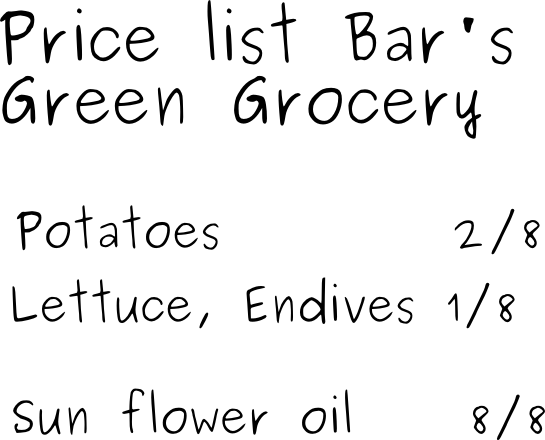Energy yield of foodstuffs
To make it more concrete, there is a list of commonly used foodstuffs and their nutritional value. This is the amount of energy released at combustion. This is a nice starting point to give you an idea of the amount of energy that was put into the foodstuffs in the first place to produce them. When a foodstuff costs more energy than it yields, it's not profitable. This doesn't mean it's bad, it's just not profitable. When in need, eliminate these non-profitable products first, and go on from there. In real life this will mean that prices of "animal" products like meat and fish are way too low. Also products like cheese, butter and milk are higher, but to a lesser extreme. To calculate the exact value of the various products, you need to look at the costs, or, the food the animal needs. In the case of fish, you have to calculate the so-called by-catch. There is also a price to the fish used as fish feed in fish farming.
The energy in 100 grams of sunflower oil is used as an index. 1 Red = 3400 kJ = 810 kcal
We chose to divide the scale in 8 parts, strawberries and peppers fall into scale 1 and the oil itself into scale 8. Also, the lowest and highest partitions are only half as high as the others, so the divisions 2 till 7 each represent 1/7 of the index, 485 kJ.
 Figure 14: Price list of a Green Grocer. No need to even
mention the weight
Figure 14: Price list of a Green Grocer. No need to even
mention the weight
This is an arbitrary scale, but the same goes for scales to measure wind (Beaufort), earthquakes (Richter) and temperature (Celsius, Fahrenheit, Kelvin). Eventually the main thing is that the scale is workable. Time will tell.
Table 2 gives a clean division: similar products are in the same scale. Notice that things like transport, packaging or processing aren't included. We only reckon the energy of the product itself
| Scale | From (kJ) | To (kJ) | Examples of foodstuffs. Energy within the product, nutritional value | RGB |
|---|---|---|---|---|
| 1 | 0 | 242 | apples, beer, beet, carrots, cauliflower, cabbage, cherries, cucumbers, peppers, pears, leek, rhubarb, radishes, strawberries,oranges, lettuce, string beans, spinach, sprouts, yoghurt, blackberries. | R1/8 G1 B0 |
| 2 | 243 | 728 | Potatoes, bananas, peas, veal, chestnuts, chicken, eggs. whole milk, breast milk (human), cow's liver, fish. | R2/8 G1 B0 |
| 3 | 719 | 1214 | Brown bread, brown beans, green peas, boiled ham , raisin bread, fries, whole meal bread, rye bread, ice cream, beef, pork, white bread | R3/8 G1 B0 |
| 5 | 1701 | 2185 | - | |
| 6 | 2186 | 2671 | hazelnuts, milk chocolate (bar), peanuts, sunflower seeds. | R6/8 G1 B0 |
| 7 | 2672 | 3157 | margarine, butter. | R7/8 G1 B0 |
| 8 | 3158 | 3400 | Tallow, bacon, sunflower oil. | R1 G1 B0 |
Most other kinds of kitchen oil e.g. olive oil and sesame seed oil, contain a bit more or less energy depending on the brand. Olive oil and sesame seed oil belong to category 9, because of their powerful 3700 kJ per 100 grams. Well over sunflower oil. They will be slightly more expensive in the shops. No doubt they were more energy-expensive at production.